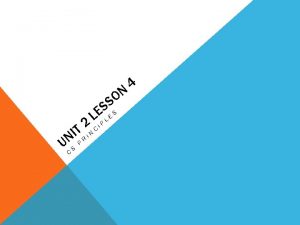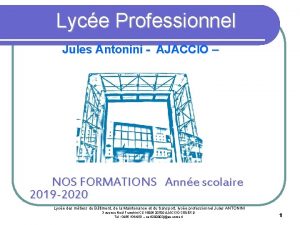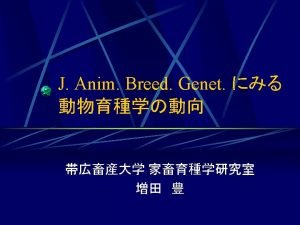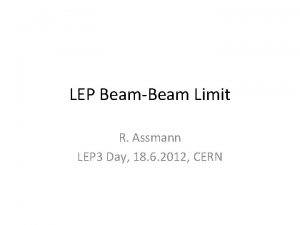N O 2 T S S LEP L









- Slides: 9

N O 2 T S S LEP L E S I IN UN P R C S C I 4

OBJECTIVES Students will be able to: Describe the redundancy of routing between two points on the Internet. Send messages using a numeric addressing protocol with the Internet Simulator. Evaluate the benefits and security concerns associated with the use of a routed system of sending packets.

ROUTERS A router is a computer designed to receive and redirect packets of information based upon the addressing information (e. g. an IP address) contained in the header of a packet. • typically have many possible locations it can redirect a packet towards. • can determine which of these will allow the packet to reach its destination fastest. • often redundant paths between two locations on the Internet, so if one path is experiencing traffic or otherwise out of service, additional paths will be available. • This redundancy makes the Internet more reliable and also helps the Internet to scale, accommodating new users (and routers!) as they are connected to the system.

JOURNAL UNIT 2 ENTRY 5 Imagine you were going to send a letter to a friend living in another state. List the steps you imagine your letter would have to take through the different parts of the postal system. Don’t worry if you’re not sure about your answers, just make an educated guess.

JOURNAL UNIT 2 ENTRY 4 Were you able to play battleship effectively using your protocol? If yes, what about your protocol made it easy to use, if not, what would you change to make it better? Reflect…

EXAMPLE: Example: Mailbox → Mail Carrier → Local Post Office → Regional Collection Center (of origin) → Regional Collection Center (of destination) → Local Post Office → Mail Carrier → Friend’s House

A MORE ADVANCED INTERNET SIMULATOR: Today's activity introduces a much more advanced version of the Internet Simulator. • Messages now have “To” and “From” addresses in a format similar to IP. • This allows messages to be sent to a single intended recipient. • The Internet Simulator also simulates the routing of messages across a network, with messages possibly being routed across multiple routers in unpredictable sequences before finally being delivered. • This is done to simulate the way traffic travelling across the Internet is constantly rebalanced in response to over or under-usage of some channels. • A message will usually make it to its destination, but we can't know for sure how it will get there.

INTERNET ROUTER ACTIVITY The format of this activity is a repeated pattern of steps: 1) Find a friend's IP address. 2) Have a short conversation. 3) Analyze the traffic to learn something about the structure of the Internet and answer questions. Find a Classmate on Your Router: Join a router with some of their classmates, adding more if they need them. There should be at least three students on each router. Point out that messages now include a "To" and "From" IP address in their header. Use the network visualization to find the IP addresses of some of their classmates. Have a Conversation: Conduct a short conversation (e. g. a simple greeting or a question and answer) with two friends on their router. Verbally confirm that both sides are receiving messages. If your To address is not constructed properly the message will be dropped. Read the Traffic: Once you have conducted your conversations, pause and demonstrate the ability to view router traffic in the Router tab. You should use the data generated here to answer the first set of questions on the Activity Guide. Click the “Log Browser” button to view the table of router data.

SUMMARY The message structure you invented for your Battleship protocol is generally described as a “datagram” or “packet”. The real Internet uses a protocol called the “Internet Protocol” or IP. Computers have numeric addresses called “IP addresses”. The most common datagram or packet structure in use today is called an “IPv 4 packet” (which means IP version 4). The Internet Protocol is a general protocol used to send messages of any type.

















